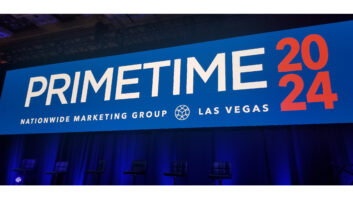New York – Millenniata, a
Utah-based optical media storage company, is reviving the use of stone as a
data-storage medium.
The technology developed
by Millenniata allows for the creation of what it claimed is the permanent
archiving of data on an optical disc.
No, Millenniata is not
selling tiny hammers, chisels and tablets that Fred Flintstone or Barney Rubble
could use, but it has developed a new layering technique that replaces the
standard dye with a man-made, stone-like substance that allows a laser to
literally etch data onto what it is calling an M-Disc.
Scott Shumway,
Millenniata’s CEO, said the technique was developed over the past three years,
and he claimed a 1,000-year lifespan for the data and discs.
“We have engineered out
the dye. That is the reason why there is degradation now. The write layer is
organic, so it will eventually return to its original organic state, losing the
data,” he said, adding that the discs have been tested for longevity by the
U.S. Department of Defense.
Helping add additional
strength is a stronger glue bond between the plastic and the writable surface.
Currently, the plastic disc has trouble staying attached to the dye layer
because it is not smooth; however, the stone is much smoother, helping to
create a stronger bond.
The 4x M-Disc is burned
to the DVD standard and is expected to cost less than $3 per disc, Shumway
said. It will also be offered in 10- and 15-packs for $13.89 and $25.59,
respectively.
Millenniata is only
developing and manufacturing the discs; it has partnered with Hitachi-LG Data
Storage to make the optical drives. The first drives and discs will become
available on Sept. 1 through Millenniata’s online store, with retail shipments
beginning in October. These will sell under the Hitachi-LG brand at the
company’s usual retail partners.
The discs, which are not
rewritable, can be read on any DVD drive, and the drive is a fully functioning
Super Multi Blu-ray drive that can read and write all available optical media,
Ted Ha, Hitachi-LG’s senior manager, told TWICE. A Blu-ray version of the
M-Disc and burner is under development.
The drives are software
and firmware upgraded versions of a current product, Ha said. The software
upgrade increases the laser’s power, enabling it to cut the stone layer.
The changes to the drive
are expected to add only a slight cost to the drives, Ha said.
The partners will offer
the technology for license to other manufacturers.
The companies will first
test the new format at retail, although they believe it will gain a great deal
of interest from government, military and corporate customers that need
long-term data storage.
Bundling promotions for
the drives and discs will begin in October, and in-box promotions for extra
blank discs will be included.
Shumway acknowledged the
fact that educating consumers at retail will be a challenge, but his company
will start sales associate training on Aug.15. The most difficult aspect will
be informing the average user that their current optical storage is not
long-term, but will degrade over time. DVDs are typically rated as having a
10-year lifespan, but most people believe it is much longer, he said. “Even
discs labeled ‘archival’ may only last 30 years,” Shumway said.
The genesis for the M-Disc came three years ago when a professor
at Brigham Young University led a Boy Scout troop on an outing to an ancient
Native American village in Utah. While looking at the buildings it struck him
that the images etched into the stone had lasted 1,500 years and were still
readable, yet all of modern societies’ information was stored on discs with a
much lower life span.
He set out to see if the ancient methodology could be adapted for
modern use. He approached a BYU chemistry professor, who believed a thin,
stone-like material could be created for use on optical discs. With this
information in hand, they brought it to computer expert and began to develop
the idea.
Shumway explained, “With Cloud computing, the industry has
mastered convenience. We have mastered read/write speeds, but what is missing
from the market is permanence. That’s what we bring.”
Shumway said he came on board first as an investor and took the
position of CEO about one year ago.













